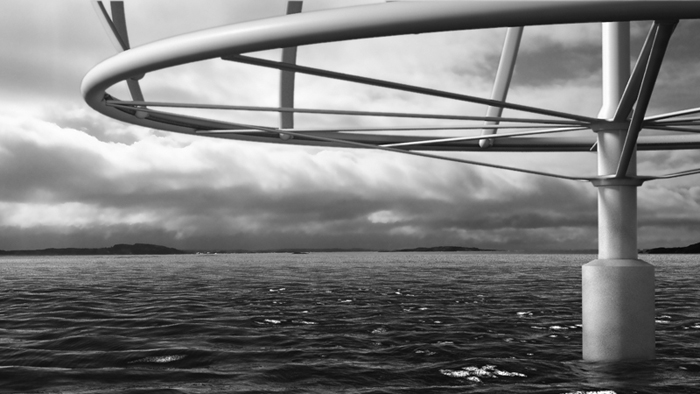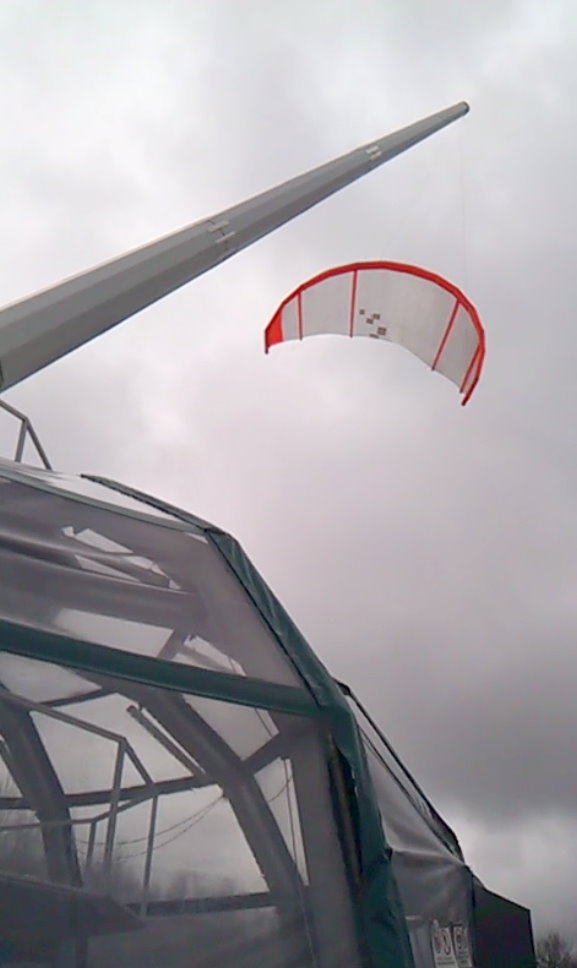Only *NOW* do the Japanese people learn that they didn't need nuclear for CO2 reductions.
An Environment Ministry draft report states that Japan can reduce its greenhouse gas emissions by 25 percent without relying on nuclear power. This news is most welcome after the dangers of nuclear power were starkly exposed by the Fukushima nuclear fiasco.
The report suggests that even with all reactors offline, cuts could reach 33 percent, depending on efforts to conserve energy and to adopt renewable energy sources. Even more conservative estimates from a similar trade and industry ministry report found that reductions of 16 percent are possible with all reactors offline.
Both reports suggest that Japan will be able to keep its pledge of reducing gas emissions by 25 percent by 2020, highlighting a long-standing truth that reductions in the most harmful heat-trapping gas emissions can be achieved without nuclear power despite claims to the contrary by advocates of nuclear energy. The government should translate this truth into a policy of nonnuclear energy production.
Questions still abound, however. Why were such reports not published before the Fukushima No. 1 nuclear power plant disaster? What has changed since then? The answer is public sentiment. Clearly, the authors of the report were encouraged by the moderate success of last summer's energy-saving campaign. Reductions in energy consumption made nuclear power much less necessary. More importantly, the reports are a response to the increased opposition of Japanese people to nuclear power.
Without admitting it directly, these reports show that the claims of nuclear power as the best or only way to cut emissions were never valid. Portrayals of nuclear energy as good for the environment can no longer be taken seriously....
http://www.japantimes.co.jp/text/ed20120422a1.html
MADem
(135,425 posts)All that shoreline, all that breeze!
RC
(25,592 posts)Tradition is important to them. Also the Japanese are more unified as a culture and think differently than we do.
There is no way that they will line their horizons, both on shore and off, with wind turbines they way we do. If Japan does go to wind power, they will come up with something different than most people in this country could not even contemplate.
MADem
(135,425 posts)flat-out BEAUTIFUL. If you look up on Mars Hill in Maine, those windmills are the prettiest things ever.
First time I ever saw any of them was out in California in the late eighties, south of San Francisco, and I thought they were the neatest things ever. I had to pull the car over to have a good look, I was so fascinated by them.
Anyone who thinks they are unattractive doesn't have an aesthetic sense. They're magnificent. Clean and sweeping!
It looks like Japan IS going to go the windmill route--sensible, IMO: http://www.bloomberg.com/news/2012-03-29/floating-windmills-in-japan-help-wind-down-nuclear-power-energy.html
The world’s third-biggest economy is struggling to diversify its energy mix after last year’s earthquake and tsunami crippled Tokyo Electric Power Co.’s Fukushima Dai-Ichi nuclear station. A few countries including Britain, the U.S. and South Korea are testing windmills that float, a technology far more expensive than most fossil-fuel or renewable energies.
Mitsubishi Heavy Industries and its partners are positioning themselves for future contracts to develop gear that so far isn’t used in commercial electricity production.

Tomohiro Ohsumi/Bloomberg News
Japan’s production of wind turbines and parts and maintenance services
is forecast to grow from an estimated 300 billion yen ($3.6 billion) a year
currently to 500 billion yen in 2030, according to the Japan Wind Power
Association.
RobertEarl
(13,685 posts)Japan has learned an awful lesson. How they ever got conned into putting up those god-awful nukes we'll soon find out. You're right, they will come up with a solution beyond our stuck in the mud anti-human nukes, eh?
MADem
(135,425 posts)According to TIME mag, everything is on the table. I think it's a good idea. I also think that using the natural movement of the tides to generate power is something that will soon be viable. I think a mix of solar, wind and tidal energy sources would be a very good fit for Japan.
Experts and officials are also looking at the possibility of exploiting new energy sources such as methane hydrate, of which Japan has significant offshore reserves.
Experts involved in the energy review differed wildly in their assessment of what proportion of the country's total energy needs should be met by nuclear power by 2030, offering opinions that ranged from "35% down to 0%"....
"This would involve the full use of offshore windmills and wind farms. In Fukushima especially, we are talking a lot about the use of wind power," said Shikata. Experts were also experimenting with the use of sea water as an alternative power source.
http://www.timeslive.co.za/world/article4422363.ece
RobertEarl
(13,685 posts)Too bad they got conned by the US into building nukes. All that money and all that time wasted away when they could have been leading the world in alternatives. Which they will from here on.
Look at the US.... we invented solar and then everyone else took it over and are doing great things, while we can't even figure out what to do with our thousand year inventory of nuke waste.
MADem
(135,425 posts)Fumesucker
(45,851 posts)This design appears to have a lot of advantages, including inherent energy storage..
http://seatwirl.com/


MADem
(135,425 posts)times of the year, or tow them to safe harbor when those wonderful tai-funs come through (and they are something--I lived through a half dozen or more of those things and the winds can be incredible).
Fumesucker
(45,851 posts)Putting windmills on barges just doesn't seem particularly efficient in terms of use of materials that are getting more expensive all the time..
MADem
(135,425 posts)with regard to these things. It could be wind patterns, it could be tai-funs. Or maybe something else entirely...?
What did you build? Oil platforms? Floating artificial islands? Did you use a lot of that "underwater cement?" That stuff always amazed me!
Fumesucker
(45,851 posts)Lift an entire drilling rig right out of the water on legs that jack it up from the sea bottom..

kristopher
(29,798 posts)Some outfit up around Ct.(?) with the backing of a European wind company.
kristopher
(29,798 posts)Their website has no technical information so its storage capabilities cant be evaluated, so it may have some potential to store energy from horizontal axis wind turbines, but its vertical axis design means it is dead in the water as a device to harvest wind.
The problem is related to both 1) how high you can lift the blades into the airstream and 2) how large of an area the blades can harvest energy from. The altitude is critical because the force is a cube of the wind speed and even a hundred feet higher makes a big difference in total yearly output. The area is also important because you can go much, much larger with a HAWT than with a VAWT.
2) The power output of a wind generator is proportional to the cube of the wind speed - i.e. double the wind speed and the power output will increase by a factor of eight (2 x 2 x 2)!
...
Power = 0.5 x Swept Area x Air Density x Velocity^3
http://www.reuk.co.uk/Calculation-of-Wind-Power.htm
The barges are a practical way of moving offshore wind into deep water where the big challenge is anchoring. The ocean bottom drops off dramatically there and it is extremely rocky. They have very little near shore shallow water like the East Coast of the US.
One of the best renewable resources is geothermal. Iceland, another very volcanic mountainous island, gets 81% of its energy from geothermal and hydro.
Fumesucker
(45,851 posts)And cut the material usage by even a bigger percentage than a SeaTwirl..
I don't think the HAWT is an efficient use of materials in an era of ever cheaper computing power and ever increasing control system capability combined with ever increasing material costs. Putting a heavy, complex generator/gearbox on top of a really tall pylon offends my sense of design.. Keep the heavy stuff at ground level and fly the wind catching portion or lighten it by greatly increasing the wind speed through altitude and flying the entire generator/wind catching unit.
There's Makani Power.
http://www.makanipower.com/

Kitegen.
http://www.kitegen.com/en/

Skywindpower.
http://skywindpower.com/ww/index.htm

And Rotokite..
This list is by no means exhaustive..
kristopher
(29,798 posts)But it isn't even on the radar as being a realistic technology to deploy. No, what we have that works is the horizontal axis wind turbine, and that is what Japan will be deploying. The only question will be what type of foundation is used. There are a number of competing designs emerging as we move into deep water with turbines that are (in the design phase) up to 15MW. Testing is underway for up to 10MW and the offshore size being deployed now ranges from 2-6MW IIRC.. Right now design is testing the cost effective limits of up-sizing and improved technologies, so I don't see any real change in the foreseeable future.
I do love the concept of high altitude wind though. Of course, I've always had my head a bit in the clouds anyway.
Fumesucker
(45,851 posts)Only one of the concepts I listed is truly high altitude, Skywindpower, and it doesn't really have to be..
In concept a HAWT is really no different than an old Dutch windmill, surely we can do better than that with ridiculously cheap computing power and all the advances in control system technology in the last fifty years.

n2doc
(47,953 posts)Last edited Sun Apr 22, 2012, 12:20 PM - Edit history (1)
Like Chernobyl, that land is useless for generations.
People have to choose what devil they will deal with. In the US, I find it absurd the amount of hand wringing that goes on about solar plants in the desert and offshore wind. As if building more coal, gas and nuke plants will be so much better for the environment.